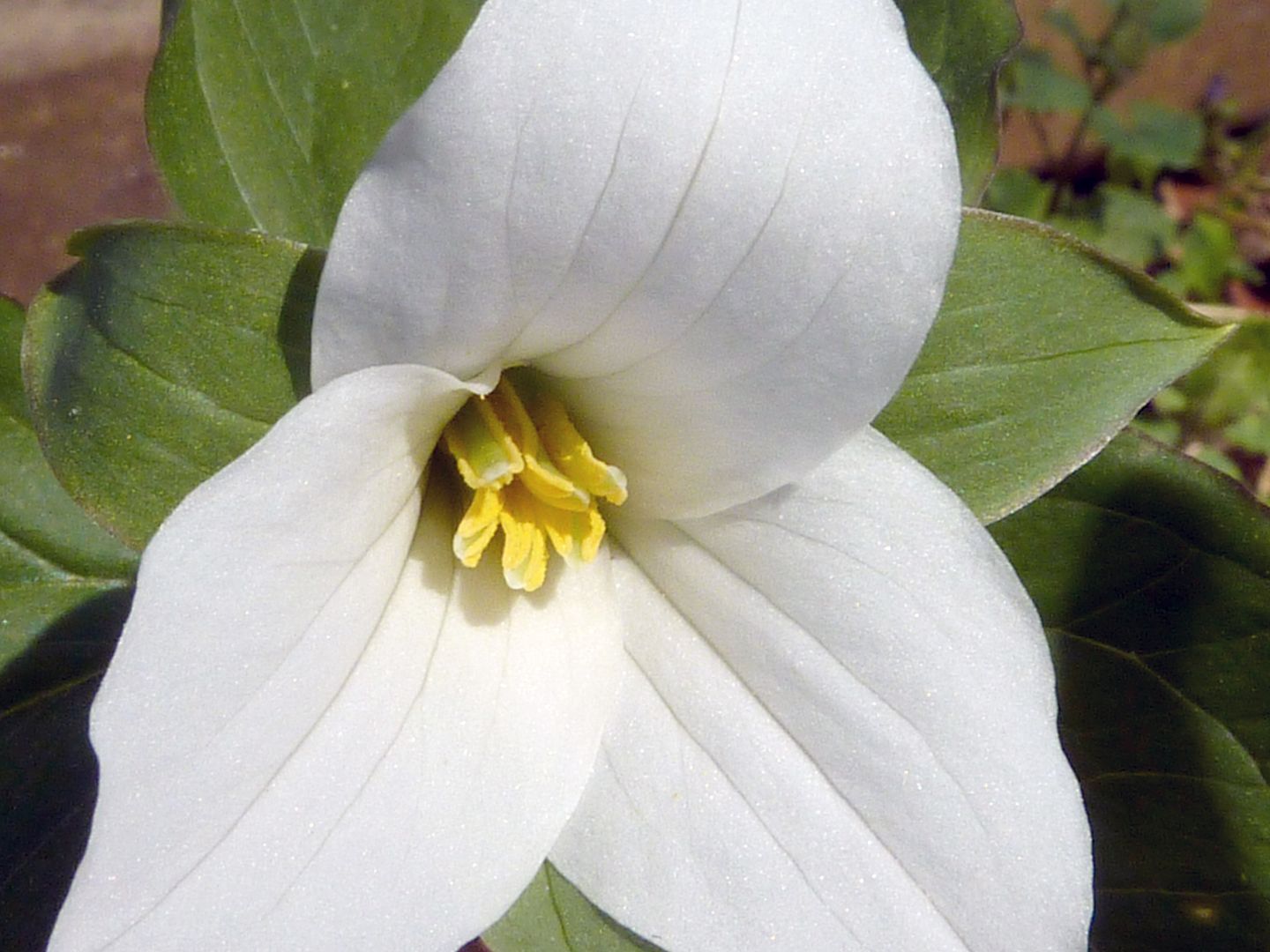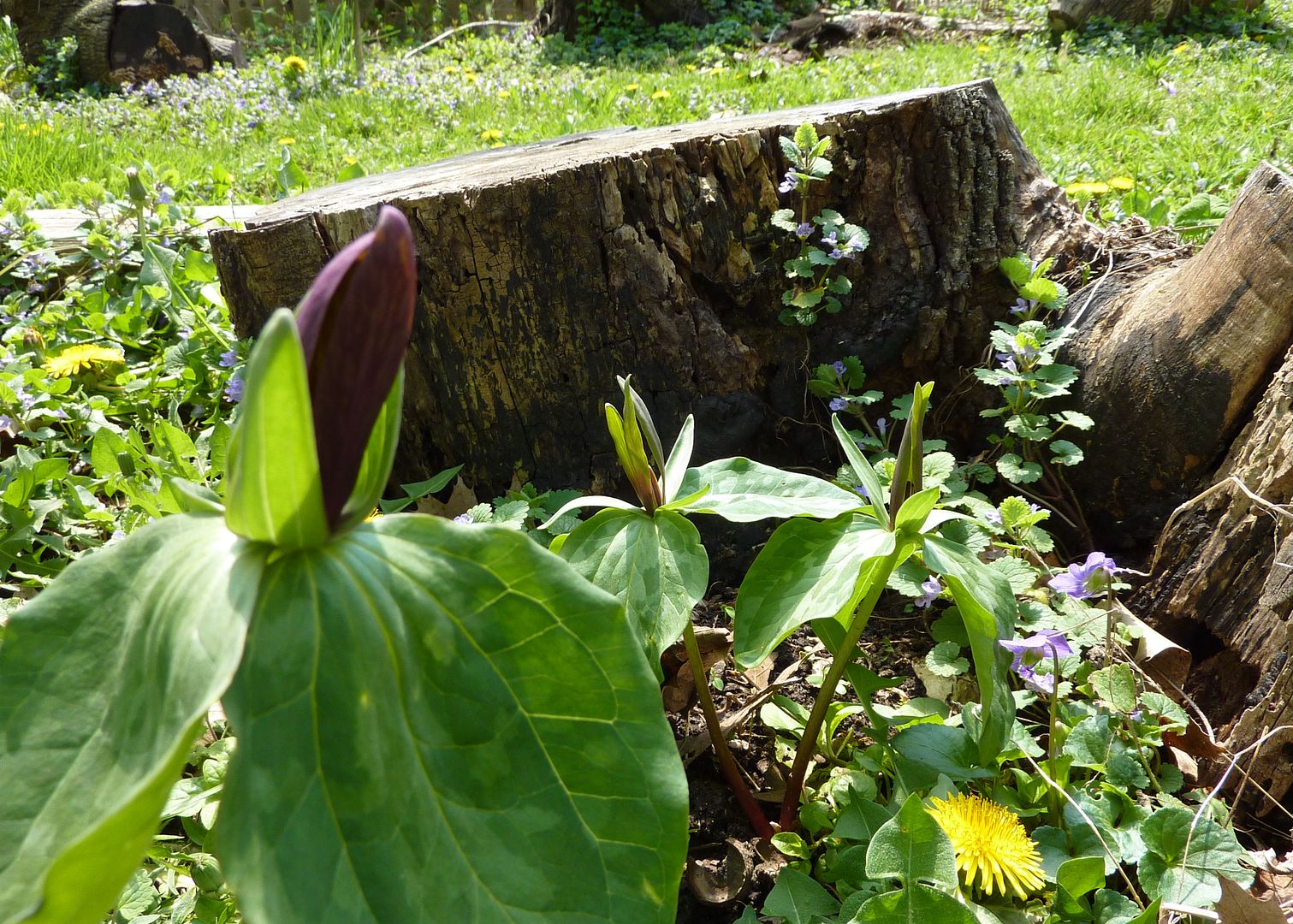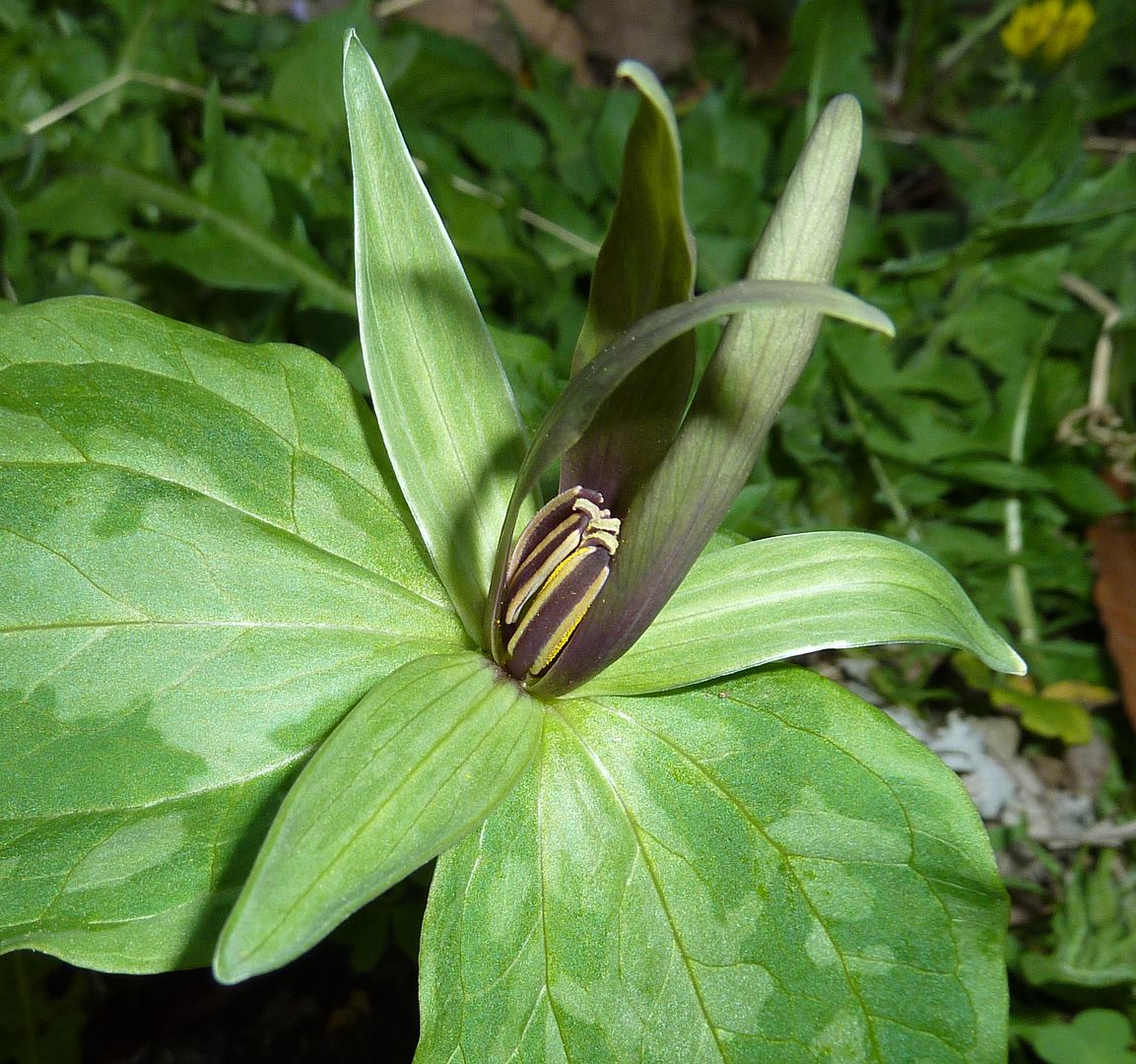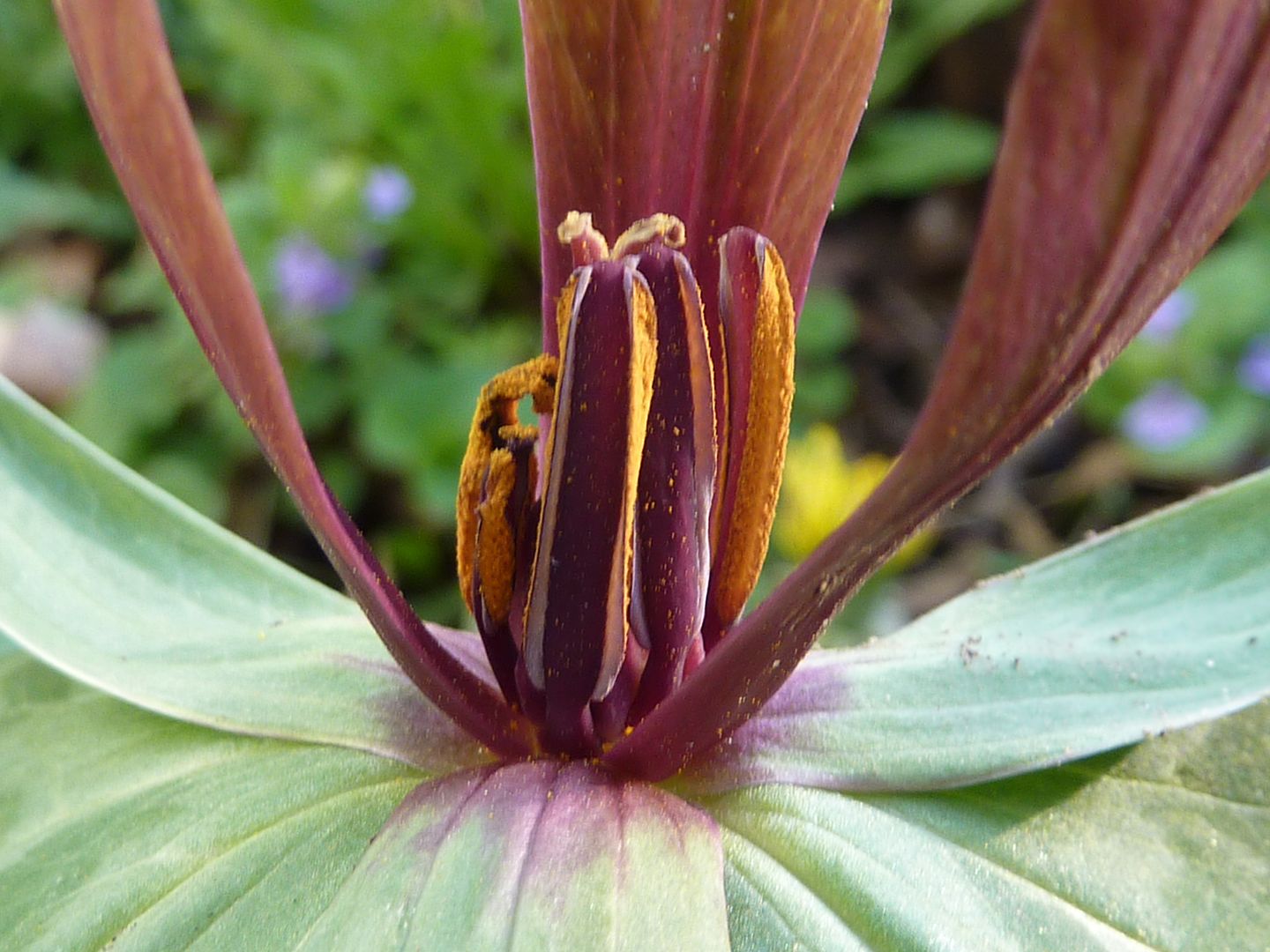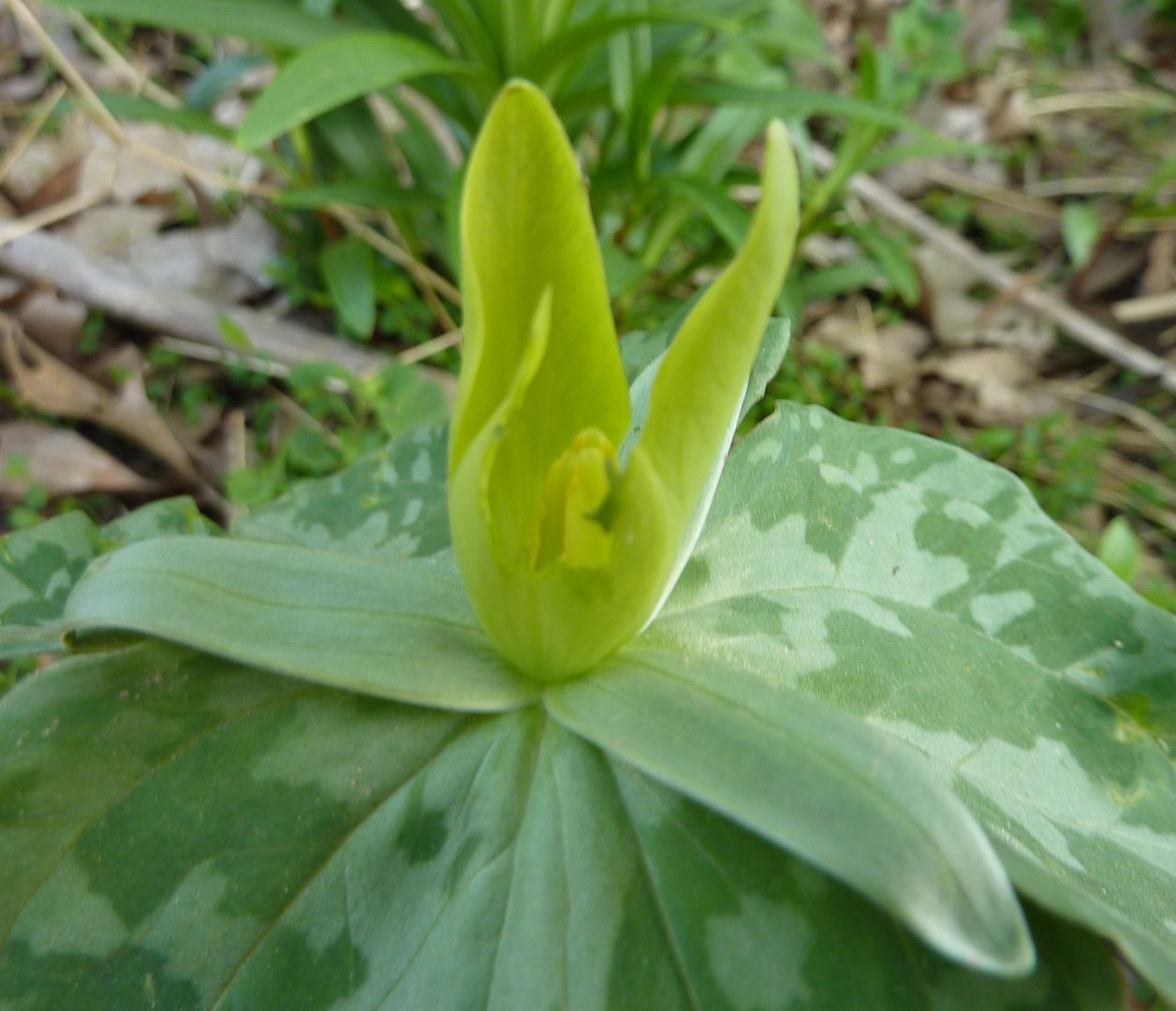Trillium grandiflorum is a pretty flower, especially in group plantings. This is probably the easiest species to identify and likely why it's the most popular Trillium of them all.
Trillium cuneatum is a nice one too but in a different way. I can identify this patch now that the flowers are opening. There are a surprising amount of traits to take into account when identifying a species. The USDA websites lists 39 species of Trillium in the US and Canada. Though T. grandiflorium is the default everyone seems to think of when we talk about Trilliums it doesn't exactly have a wide range. In fact none of the species have a wide range at all, it's just grandiflorum is the easiest to identify. I won't get into all the details because the flower needs to be described with scientific terms, but here are a few I used to ID this species.
Let's use the picture above to start out. I'm assuming the ones photoed there are the same species, after all they were labeled as such (I just forgot which one). The flower varies somewhat but remember, one divided this year while the bigger one focused more on making a taller stem.
The flower is somewhat clawed, not very flowery like T. grandiflorum is, but a flower all the same.
The Anthers lack connective tissue. Meaning the pollen goes right up to the top as pictured above. In some Trillium the pollen stripe stops half way and the top of the anther looks like a tongue, though not always red.
Flower color is a deep red brown. Though one should never identify based on color alone. Because Trilliums are "hard to grow" and take the better half of a decade to flower, they've pretty much been overlooked by the nursery industry. Because wild populations still have isolated pockets of diversity there are a lot of mutations to exploit. Trillium species don't often cross pollinate in the wild but in the garden setting hybrids and mutations are more than likely to be found. The classic example of flowers having a 1/4 chance of being white, or red and 2/4 chance of being pink just doesn't happen in Trilliums that often.
Trillium grandiflorum, though it is known as the standard white trillium has been found in lots of colors. Some turn pink after pollination. One type was found to have a pink flower as soon as it opens. There is a doubled flowering one with no reproductive parts at all and has only spread by cloning itself. There is a hybrid with T. luteum that has a yellow flower. And I've even seen a red flowering one on the internet. God only knows what the other 48 species have to offer in diversity.
The anther sacs are all latrorse facing. Meaning the pollen faces the sides of the anther. In other species they can face introrse, or extrorse (inward or outward).
Here is Trillium luteum. I know becuase it's the only yellow flowering one in the sessile group. It used to be the only yellow flowering Trillium in North America too until someone found a yellow T. grandiflorum. It was a hybrid of course but it's still unclear if these hybrids are able to reproduce. If so then a lot of people may get rich off these long term investments. Purebred Trilliums normally sell for $9 to $25 or so each plant (I even saw someone trying to sell them for $50 each. Ha!) These unique hybrids though should sell for much more because of their traits. It would be years before they could be cultivated to a population though but when you have control over the only Trillium of it's kind it can mean big money to collectors.
Four leaf Trilliums are good luck after all, and have been known to occur.
